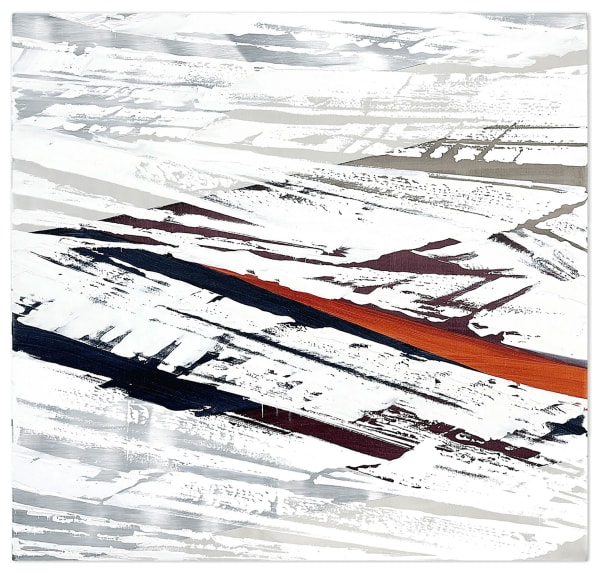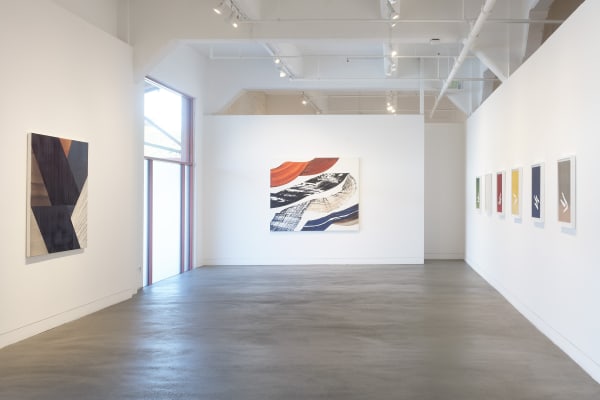Mexican, b. 1950
Lives and works in Mexico City, Mexico, New York, NY and Santa Fe, NM
Influenced by the visual language of his native Mexico, Ricardo Mazal’s striking, abstract oil paintings examine themes of spirituality, transformation, the passage of time; impermanence, renewal, and return. The lush colors in his tactile, textured canvases evoke geologic striations, light between trees, and the movement of prayer flags or migrating birds.
Mazal is perhaps best known for his Trilogy series, a multidisciplinary exploration of the sacred burial rituals of diverse cultures: the Tomb of the Red Queen in Mexico’s Palenque National Park, a sylvan cemetery in Germany’s Black Forest, and Mount Kailash in the Tibetan Plateau. Each series begins with detailed investigations into sites that the artist has visited, many of them endowed with spiritual significance. Photographic studies of these sites are then digitally manipulated on a computer, allowing the artist to visualize them as “virtual” paintings that are later translated to canvas.
Mazal has exhibited extensively in galleries and museums throughout the Americas, Asia, and Europe. His work has been the subject of retrospectives at the Center for Contemporary Arts, Santa Fe, NM (2018); Museo de Arte Abstracto Manuel Felguerez, Zacatecas, Mexico (2010); Museo de Arte de Querétaro, Mexico (2009); Museo de Arte Moderno, Mexico City, Mexico (2006); and Museo de Arte Contemporaneo de Monterrey (MARCO), Mexico (2000), as well as solo and group exhibitions at the Americas Society, New York, NY; Mexican Cultural Institute, Washington, DC; Museo Estación Indianilla, Mexico City, Mexico; Museo Nacional de Antropología, Mexico City, Mexico; The Painting Center, New York, NY; Scottsdale Museum of Contemporary Art, AZ; and the Tucson Museum of Art, AZ. In 2015, Mazal’s work was included in Frontiers Reimagined: Art That Connects Us, a collateral event of the 56th Venice Biennale.
Mazal’s work is held by institutions including Fondation Maeght, Paris, France; Minneapolis Institute of Art, MN; Museum of Contemporary Art of Monterrey, Mexico; Museo de Arte Moderno, Mexico City, Mexico; and the Scottsdale Museum of Contemporary Art, AZ, as well as the collections of Apple, Banco de Mexico, and Deutsche Bank, among others. He is a recipient of the prestigious Creador Artístico award, granted by the Sistema Nacional de Creadores de Arte (FONCA), Mexico, and the Pollock-Krasner Foundation grant.











